
01_development_and_concepts
.pdf
MANAGEMENT
Applied Summer School
Business in Europe
Development and Concepts of the EU
Prof. Vito Bobek
University of Apllied Sciences FH Joanneum
vito.bobek@fh-joanneum.at
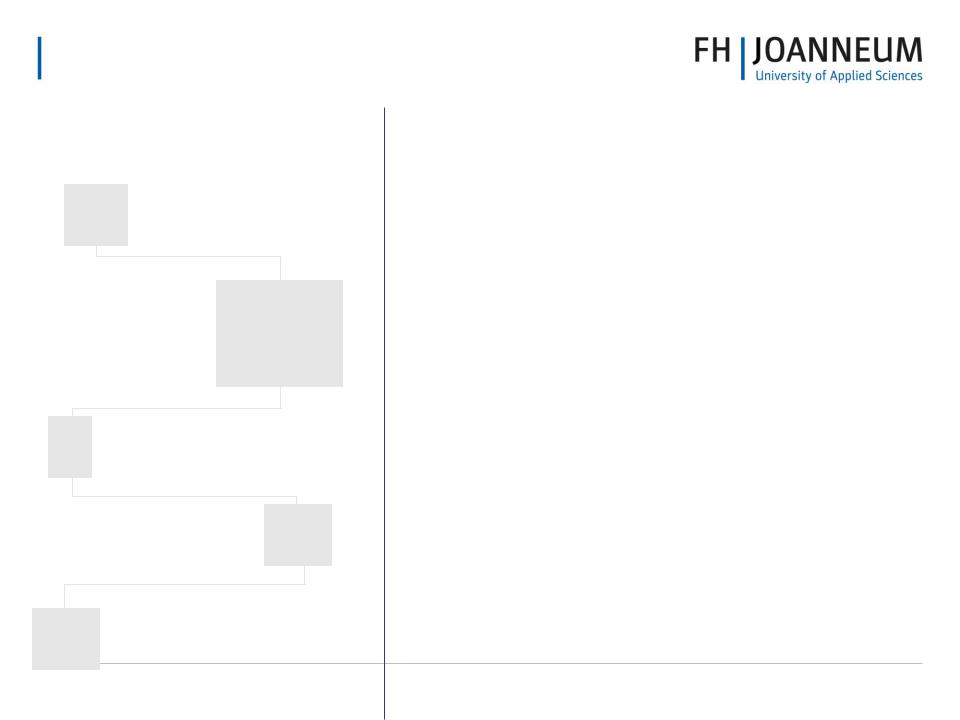
MANAGEMENT
28 Member States
Combined
population of 500
EU Member
States million
Percent of world’s
7 population
Percent of
global GDP 30
Percent of combined 55 worldwide Official
Development Assistance
What is the European Union?
•Shared values: liberty, democracy, respect for human rights and fundamental freedoms, and the rule of law.
•Largest economic body in the world.
•World’s most successful model for advancing peace and democracy.
•A unique institution – Member States voluntarily cede national sovereignty in many areas to carry out common policies and governance.
•Not a super-state to replace existing states, nor just an organization for international cooperation.
•World’s most open market for goods and commodities from developing countries.

MANAGEMENT
West Europe's Post-war Arrangements
•The Early Post War Period: A Climate for Radical Change
–Europe’s economy lay in ruin with its infrastructure, factories, housing and farms destroyed or in shambles.
–Worse yet, if a man were middle aged, it would have been the second time that he found himself amid such devastation.
–Many concluded that the nation-state model of governance was broken and a replacement was needed. This simple realisation opened the door to a truly revolutionary re-think.
–Communism offered one alternative. But Stalin’s brutish treatment of Soviet and
East Europeans in the late 1940s and 1950s suggested to most West Europeans that nirvana lay not is this direction.

MANAGEMENT
The Early Post War Period: A Climate for Radical Change (1)
•In 1947, the Organisation for European Economic Co-operation (OEEC) was set up to administer the US-backed Marshall Plan.
•Its aim was to promote economic co-operation and to foster trade liberalisation.
•The OEEC succeed in economic terms, freeing trade and payments among its 17 members (the EU-15 plus Iceland and Norway).
•However some OEEC members found the OEEC too weak and too limited to bring about the deeper integration that they felt was necessary to avoid future wars and restore economic strength.
•The direction embraced by most of Europe’s leaders was that of European political union.
•Jean Monnet—the architect of modern Europe—headed a high-powered pressure group called the Action Committee for the United States of Europe
(ACUSE) in 1955. This group’s membership included leading figures from Socialist, Christian Democratic and Liberal parties from all of ‘the Six’

MANAGEMENT
The Early Post War Period: A Climate for Radical Change (2)
•The group’s aim was nothing less than the replacement of
European nation-states with a supra-national government.
•Their model was the European Coal and Steel Community (ECSC) which had since 1951 provided supranational governance over the coal and steel industries of France, Germany, Italy and the Benelux nations
•In 1951, the Six actually placed what was at the time the industrial core of their economies under the supra-national control of the ECSC.
•By 1956, two proposals for further integration were under consideration: the European Economic Community (EEC), which proposed a customs union and a commitment to deeper integration, and a looser free-trade area involving all of West Europe.
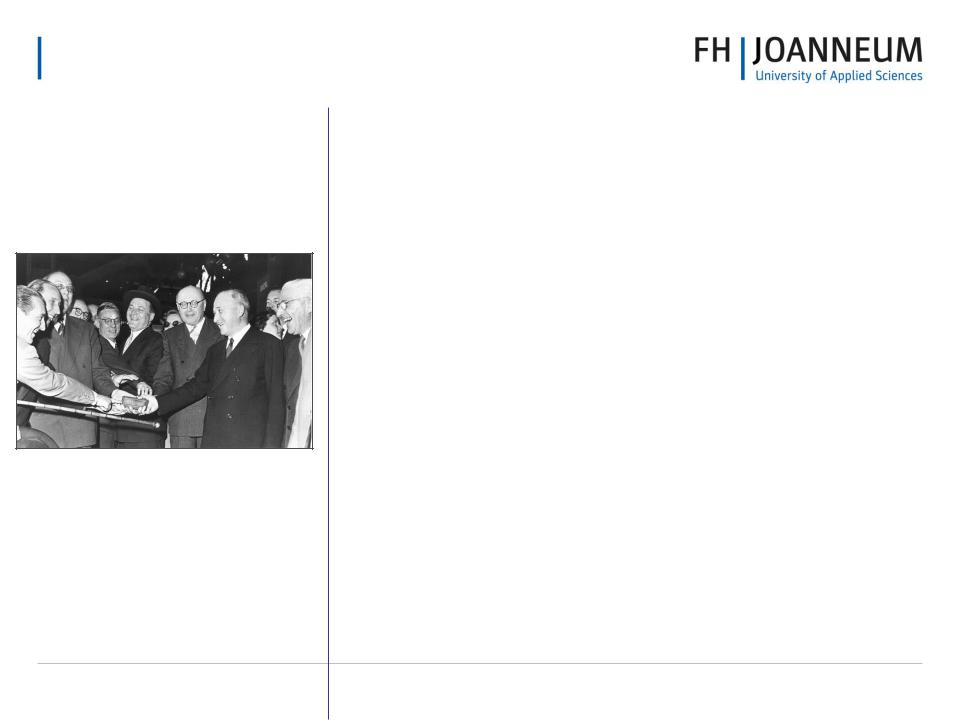
MANAGEMENT
Jean Monnet and other leaders with the first “European” ingot of steel
1951:
European Coal and
Steel Community
•In the aftermath of World War II, the aim was to secure peace among Europe’s victorious and vanquished nations and bring them together as equals, cooperating within shared institutions.
•Based on a plan by French Foreign Minister Robert Schuman.
•Six founding countries – Belgium, the Federal Republic of Germany, France, Italy, Luxembourg and the Netherlands – signed a treaty to run heavy industries (coal and steel) under common management.
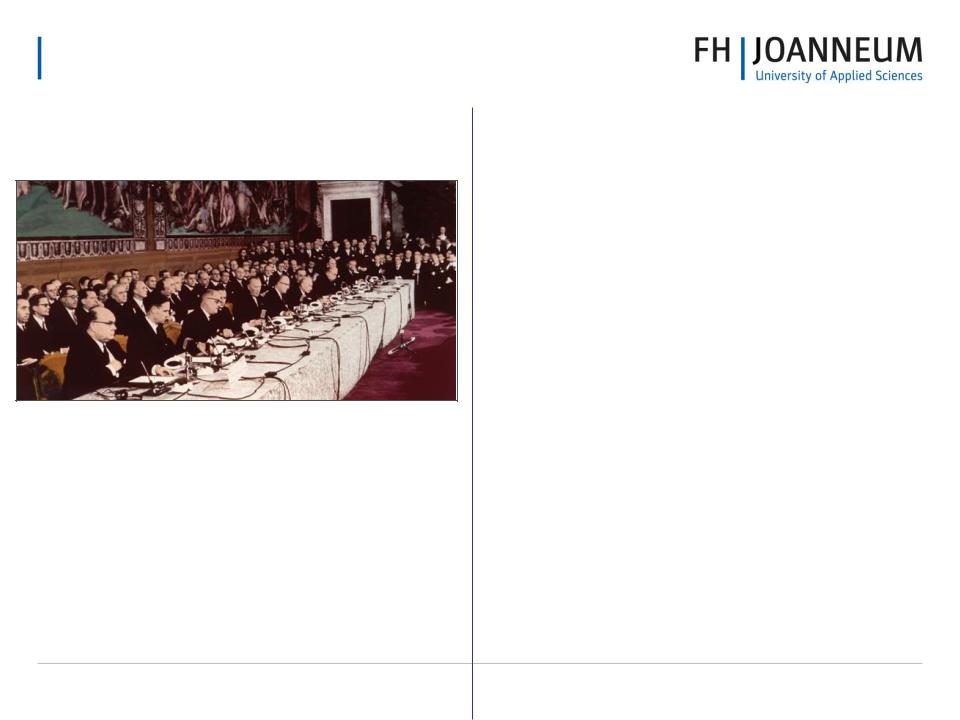
MANAGEMENT
Signing of the Treaty of Rome
1957:
Treaty of Rome
•The six founding countries expanded cooperation to other economic sectors, creating the European Economic Community (EEC) – or
“common market.”
•As a result, people, goods, services, and capital today move freely across the Union.
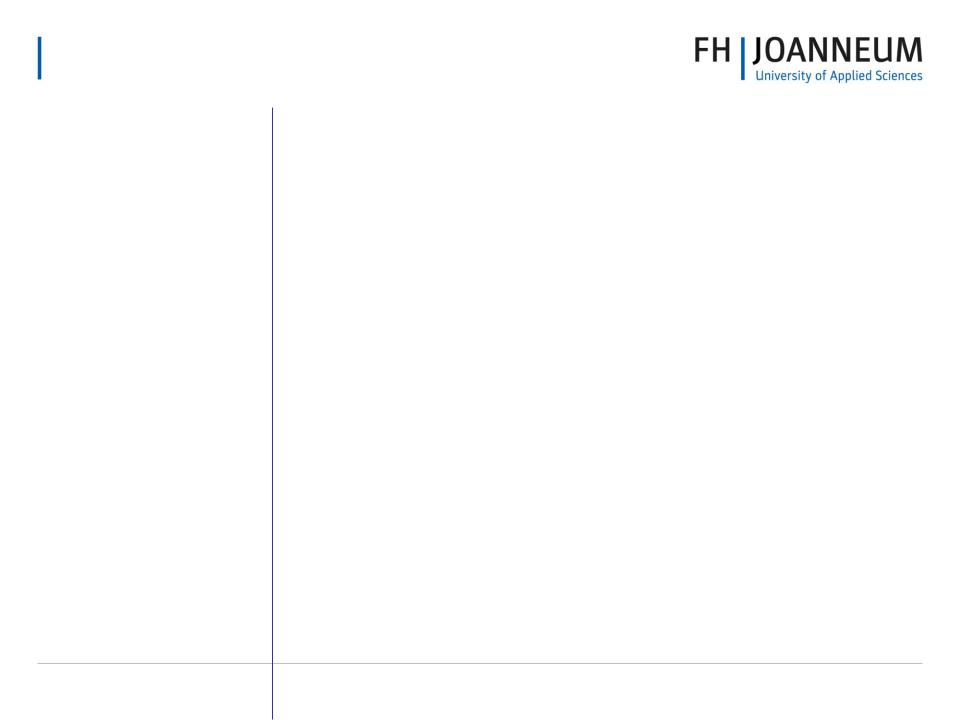
MANAGEMENT
“Enlargement has been a success story for the European Union and Europe as a whole. It has helped to overcome the division of Europe and contributed to peace and stability throughout the continent.”
European Council
Declaration
Dec. 15, 2006
50 Years of EU Integration
Enlargement has:
•Inspired reforms and consolidated common principles of liberty, democracy, respect for human rights, fundamental freedoms, the rule of law, and market economy.
•Enhanced the EU’s weight in the world and made it a stronger and more attractive international partner.
|
1957 |
2007 |
|
|
|
Member States |
6 |
27 |
Population |
174 million |
493 million |
Languages |
4 |
23 |
|
|
|
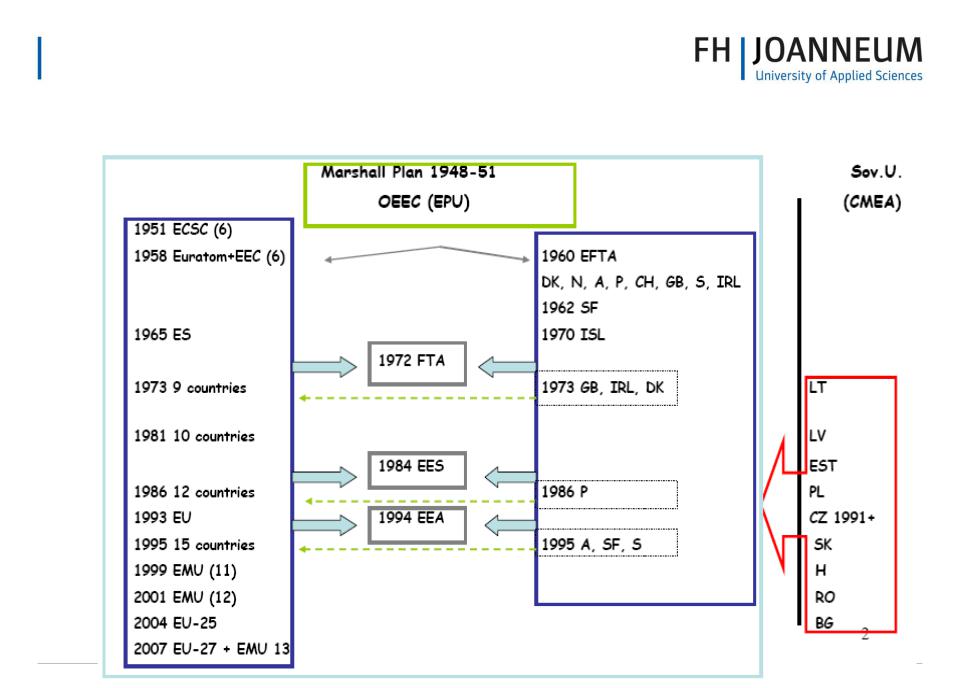
MANAGEMENT
Integration Processes in Europe

MANAGEMENT
Two Non-Overlapping Circles (1)
•In 1957, the dominant element of West Europe's post-war trade arrangement was sketched in when the Six signed the Treaty of Rome and created the EEC. The Treaty was quickly ratified by the six national parliaments and the organisation came into existence January 1958.
•Discussions of a wider West European free trade area agreement soon broke down, leaving the 11 other OEEC members—most of them small—on the sidelines.
•Fearing the discrimination and marginalisation that might occur if they faced the EEC bilaterally, seven of these ‘outsiders’ formed their own bloc in 1960, namely the European Free Trade Association (EFTA). This co-ordinated reaction was greatly facilitated by the leadership of a dominant country, namely the United Kingdom.
